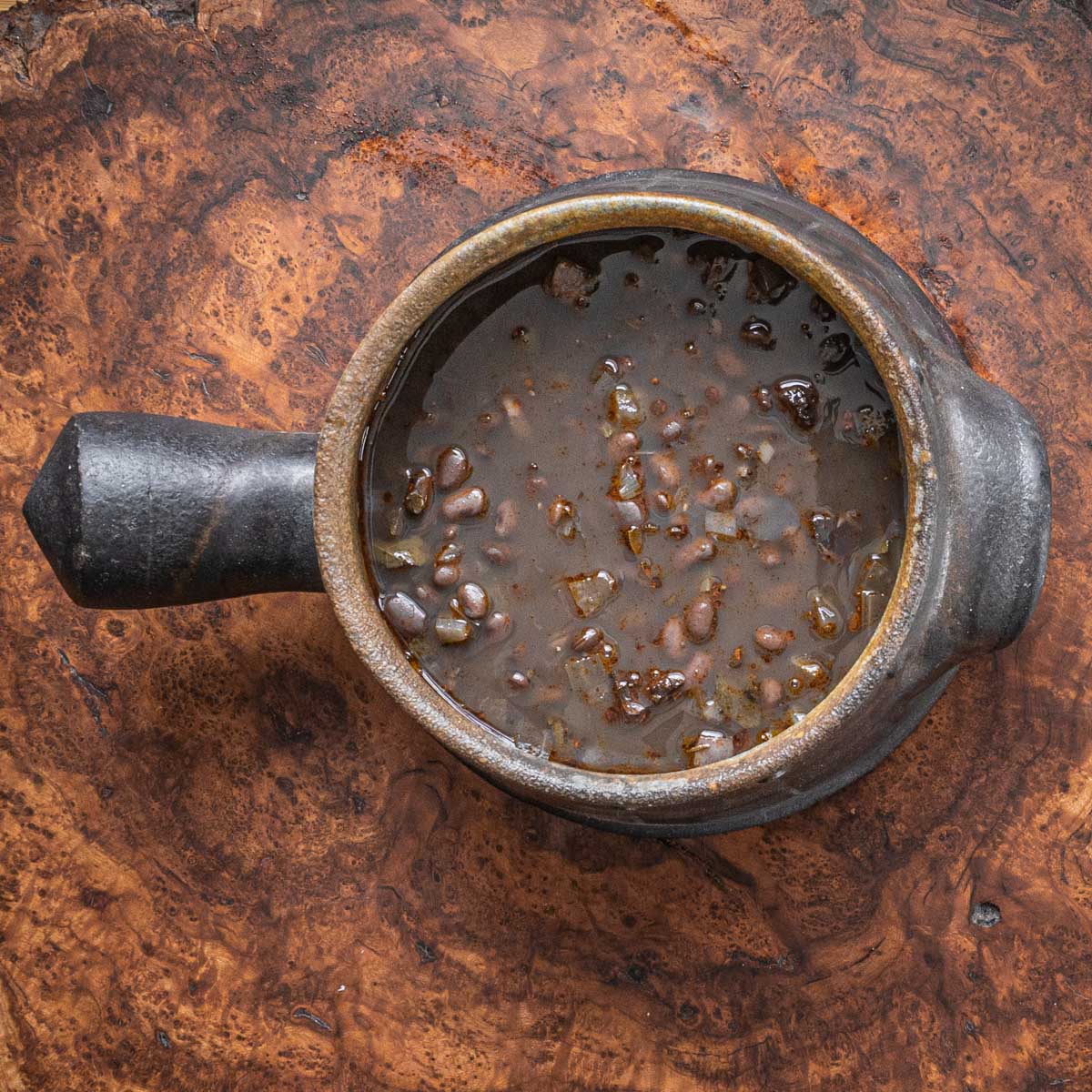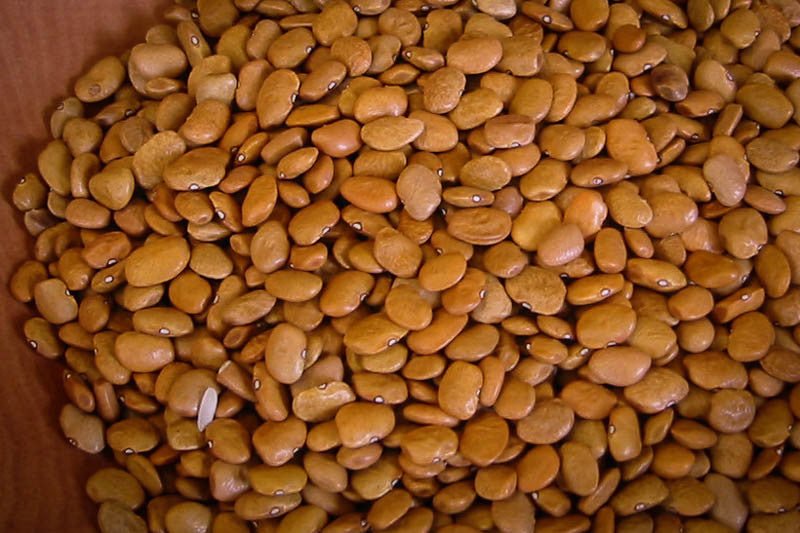Tepary beans
t'pawi, Phaseolus acutifolius
Phaseolus acutifolius, also known as the tepary bean, is a legume native to the southwestern United States and Mexico and has been grown there by the native peoples since pre-Columbian times. It is more drought-resistant than the common bean and is grown in desert and semi-desert conditions from Arizona through Mexico to Costa Rica. The water requirements are low. The crop will grow in areas where annual rainfall is less than 400 mm (16 in). The tepary bean is an annual and can be climbing, trailing, or erect, with stems up to 4 m (13 ft) long. The specific epithet, acutifolius, is derived from Latin acutus (pointed, acute), and -folius (-leaved). A narrow leafed, variety tenuifolius, and a broader leafed, variety latifolius, are known. Domestic varieties are derived from latifolius. Observation of "a limited number" of wild specimens suggested that "the flowers concur with the summer rains, first appearing in late August, with the pods ripening early in the fall dry season, most of them in October".: 6 The beans can be of nearly any color. There are many local landraces. Beans vary in size but tend to be small. They mature 60 to 120 days after planting.
Source: Wikipedia
Recipes











